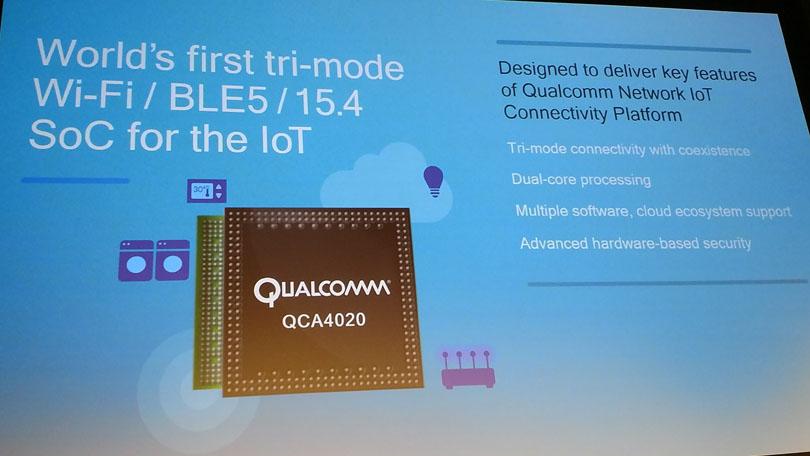Google wants you to program gadgets with Android. Now Qualcomm frees them from Wi-Fi.
Qualcomm is liberating Google’s Android Things with some new chipset support. Its Snapdragon 210 chips will run the Android Things OS, making them the first potential Android Things-powered devices with built-in LTE.
Android Things, which is still in a developer beta, is Google’s attempt to build an OS for little Internet of Things gadgets, like connected video cameras, door locks, and vending machines. Google formerly had an OS called Brillo designed for the same work, but Android Things lets Android developers program these gadgets with more familiar tools.
At its launch in December, Android Things supported Raspberry Pi 3, NXP Pico, and Intel Edison platforms. These are small, low-cost, flexible development platforms, but none have built-in LTE modems. The Snapdragon 210, best known for powering low-end smartphones, adds LTE to the mix.
Although the 210 is quad-core like the Raspberry Pi 3, the Pi 3 is likely to have better processor performance by using a more efficient core design. The Snapdragon 210 uses an older Cortex-A7, while the Raspberry Pi 3 uses the newer Cortex-A53 design. But, of course, the Pi 3 doesn’t have LTE.
The 210 will also now support Google Cast for Audio and Google Drive, letting developers create gadgets that stream audio from users’ cloud storage.
“We’re super excited to work with Google on this and the 210 is expected to be available later this year with Android Things,” said Raj Talluri, Qualcomm SVP of product management.
For IoT developers who don’t need LTE, Qualcomm also today announced a new chipset, the QCA4020, which combines Wi-Fi, Bluetooth 5, and ZigBee along with Apple’s HomeKit and Amazon’s AWS, so smart home devices can connect to whatever hub is available. It also looks like they have potential for supporting Alexa and Siri out of the box, something iDevices Smart Home Essentials can handle, but not many other products are capable of right now.
“If you take one of these products and you put it in a speaker or a smart assistant, you don’t have to worry about how the different devices in the home are connected. It really levels the problem of multiple radios in the house,” Talluri said.
QCA4020 devices will be available in the second half of 2017, Qualcomm said.








